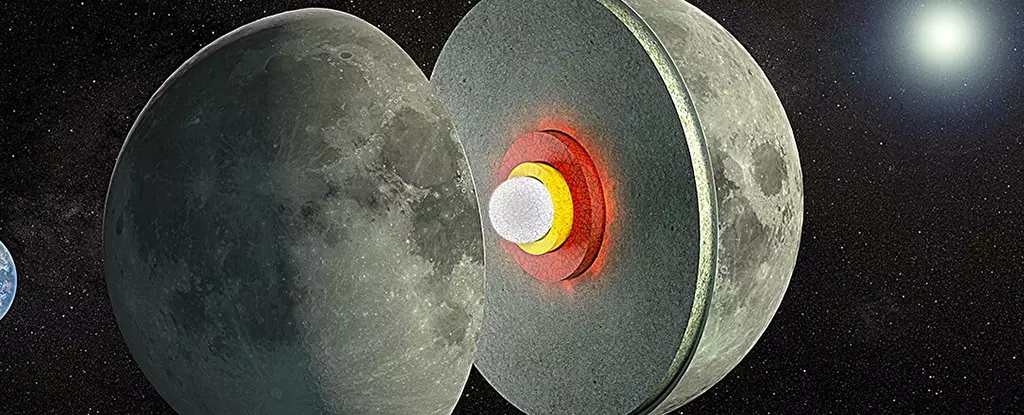The Moon, our celestial neighbor, has long been a subject of fascination, holding countless secrets about the evolution of Earth’s only natural satellite. Recent research has added a compelling chapter to our understanding of the Moon’s internal structure, revealing the likelihood of a partially-molten zone nestled between its rocky mantle and solid metal core. This breakthrough comes from a collaborative study conducted by researchers at the NASA Goddard Space Flight Center and the University of Arizona, which employs innovative methodologies to explore the Moon’s geophysical characteristics.
The essence of this research lies in the measurement of the Moon’s shape and gravity as it responds to the gravitational forces exerted by the Earth and the Sun. The study responds to longstanding speculation regarding the internal structure of the Moon, using advanced data from NASA’s Gravity Recovery and Interior Laboratory (GRAIL) and the Lunar Reconnaissance Orbiter. A critical aspect of the findings suggests that the lunar mantle does not consist of solid rock alone but rather includes a viscous, goopy layer that undergoes periodic shifts, akin to ocean tides.
This new understanding arises from the assessment of gravitational pull and how it affects the Moon’s physical form. Unlike Earth’s tides that result from water movements, these lunar tides produce structural deformities within the Moon’s rocky exterior. By quantifying these tidal effects annually for the first time, researchers have provided new insights into the Moon’s rheological properties, indicating that a low-viscosity zone (LVZ) must exist beneath the solid mantle to account for the observed shifts.
The concept of a LVZ within the lunar mantle is not new; it has been a subject of discussion among researchers for several decades. However, previous data lacked the specificity required to confirm its existence definitively. The latest study’s findings highlight a pivotal shift in our understanding: models suggesting that the Moon’s interior is entirely solid no longer hold weight. Instead, the evidence leans towards a partially molten layer, prompting deeper inquiry into its origins and maintaining factors.
One of the critical questions raised by this study is: how did this low-viscosity zone form? Researchers hypothesize that the presence of certain minerals, particularly titanium-iron oxide ilmenite, may play a significant role in sustaining the high temperatures necessary for partial melting. This hypothesis invites intriguing comparisons with Mars, where seismic data has also hinted at similar partially molten layers.
The discovery of a liquid-like layer beneath the Moon’s rugged surface opens up a wealth of possibilities regarding the Moon’s thermal state and geological evolution. Researchers emphasize that understanding this LVZ is crucial for piecing together the Moon’s history over billions of years. It raises questions about thermal activity, volcanic processes, and even the potential for ore and resource deposits, which could have significant implications for future lunar exploration and habitation.
In the coming years, as ambitions mount for establishing a permanent lunar base, the significance of seismic readings obtained directly from the Moon’s surface could shed further light on the mysteries that lie beneath. Instruments deployed on the lunar exterior could provide real-time data to confirm or challenge these findings, enabling us to construct a clearer picture of not just the Moon’s interior but also the processes that have shaped it through time.
The research conducted by NASA and the University of Arizona serves as a pivotal reminder of how much remains to be uncovered about our closest cosmic companion. The potential existence of a partially-molten layer challenges long-held beliefs about lunar composition and opens new avenues for scientific inquiry. As our technological capabilities grow and interest in lunar exploration intensifies, the Moon’s enigmatic depths may soon yield insights that illuminate not only its past but also the future of humanity’s relationship with the cosmos. The investigation into the Moon’s geology is far from over, and with each step forward, we draw closer to understanding the celestial body that has captivated human imagination for millennia.


Leave a Reply